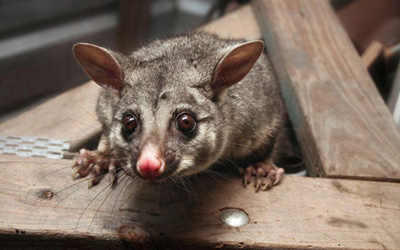Rodent control, as part of a construction project, is often overlooked. Resulting in affecting the adjacent neighborhoods and posing a threat to the health of the construction workers due to displacement of the colonizing rodents.
When new structures are completed with inherent rodent infestation because of inadequate rodent control and sanitization, it leaves the owners with critical problem from the very start. At times, rodent control may be included in a project, but most of the time it is overlooked, which should never be the case. The goal is to resolve sanitation and rodent problems on and around the work site prior to the start of construction/demolition.
Rodent problems can occur during construction/demolition projects:

- When a project mobilizes, rodents can be dispersed with initial excavation, clearing/grubbing or demolition;
- Rodents can cause serious damage to plants, irrigation pipes and flow meters;
- During the project, rodents can quickly colonize the work site because of exposed soil, debris, fence lines, trailers and food from workers.
- As rodent numbers increase and construction activities shift within the site, rodents may be dispersed to abutting properties;
- During de-mobilization, when debris and fence lines are removed, dispersal of rodents to adjoining areas can occur due to loss of cover and on-site food sources.
MAJOR SPECIES OF RODENTS FOUND
House Mouse (Mus Musculus)
Appearance:
Adults: brown to grey, furry, 10-16 cm including the 5-8 cm tail, large ears and relatively small eyes.
Life Cycle
Female may have 3-5 litters. Young (4-8 per litter) are born fur-less and blind, 19-21 days after mating. They reach sexual maturity in six to ten weeks. Life span of adults is about nine to twelve months.
Common House Rat / Roof Rat / Tree Rat / Black Rat (Rattus Rattus)
It is the common rat found in our homes causing much nuisance and damage. It is an extremely agile creature, able to scale walls and walk across telephone wires with ease and. It builds its nest in walls, attics, vines or trees near and around homes.
Appearance:
Adult : dark brown to black, 10-12 cm, with a 15-20 cm tail
Life Cycle:
Female can have up to 84 young in her lifetime. Life span of adults is around a year.
Brown Rat/ Norway Rat / Sewer Rat (Rattus Norvegicus)
It is larger and more robust-looking than its common cousin the House Rat, and the tail is shorter. An excellent swimmer, it is found in sewers and drains in large cities, where it thrives in the damp, wet surroundings. It is usually limited to seaports and large cities.
Appearance:
Adult : Brown, with whitish brown underparts, 18-20 cm, with a 15-18 cm tail.
Life Cycle:
Prolific breeders with about 60-70 young in a year.
Rats and Mice Can…
- Spread disease to humans via their droppings or urine.
- Spread sickness and death via parasites such as fleas and intestinal worms.
- Cause extensive physical damage to electrical wires, irrigation pipes, plants, doors, skirting boards, books, stored products, food containers and upholstery.
- Spoil and Contaminate food with their droppings, urine or fur.
Signs of Rodent Activity in Your Premises
Droppings: New rodent droppings are shiny and pliable and within 2-3 days become dull and hard.
Mouse droppings are 3-6 mm long and have pointed ends. Rat droppings are up to 12 mm long and have blunted ends.
Rub marks: These are greasy smear marks and they are caused when rodents rub their fur against vertical surfaces such as walls.
Burrows: Rat burrows are normally found next to waterways and buildings.
Sounds: Rats and Mice are normally heard at night and they include squeaking in the case of mice and clawing
and gnawing in the case of rats.
Nest: A rodent nest is usually made of rags and paper and cardboard.
Gnawing: Rats gnaw to keep their incisors down and use wood, metal, conduit, pipes and cables in order to do this.
Desert Pest Control Can Help You!

We setup a guaranteed program to control rodents in a building and its surrounding environment and advise how you can help reduce future problems.
Inspect We will carry out a survey and report our findings.
Bait We will set up rodent bait stations at various strategic locations in and around the buildings. These rodent bait stations securely hold the bait within the station which means that secondary poisoning of non-target animals are greatly reduced to almost zero.
Break Neck Traps and Glue Boards We can set up specially designed traps where baits cannot be used.
What You Can Do with our Advice
Sanitation You can reduce food and water available to rodents. One way you can help is to avoid Keeping rubbish indoors overnight.
Proofing We can advise you on ways you can help to proof your home against rodent entry.
This may include simple measures such as fixing mesh over holes to prevent rodent entry.

